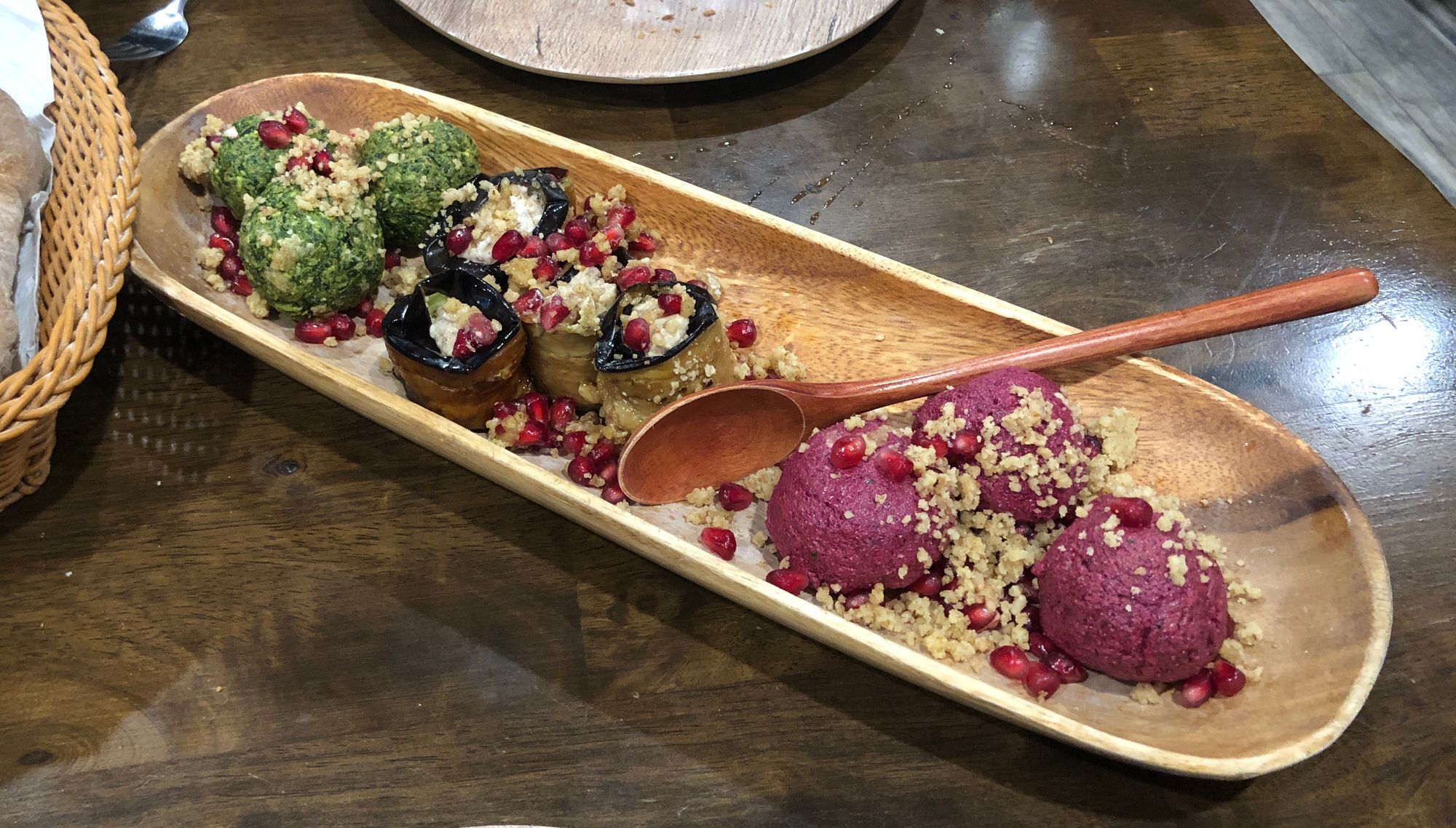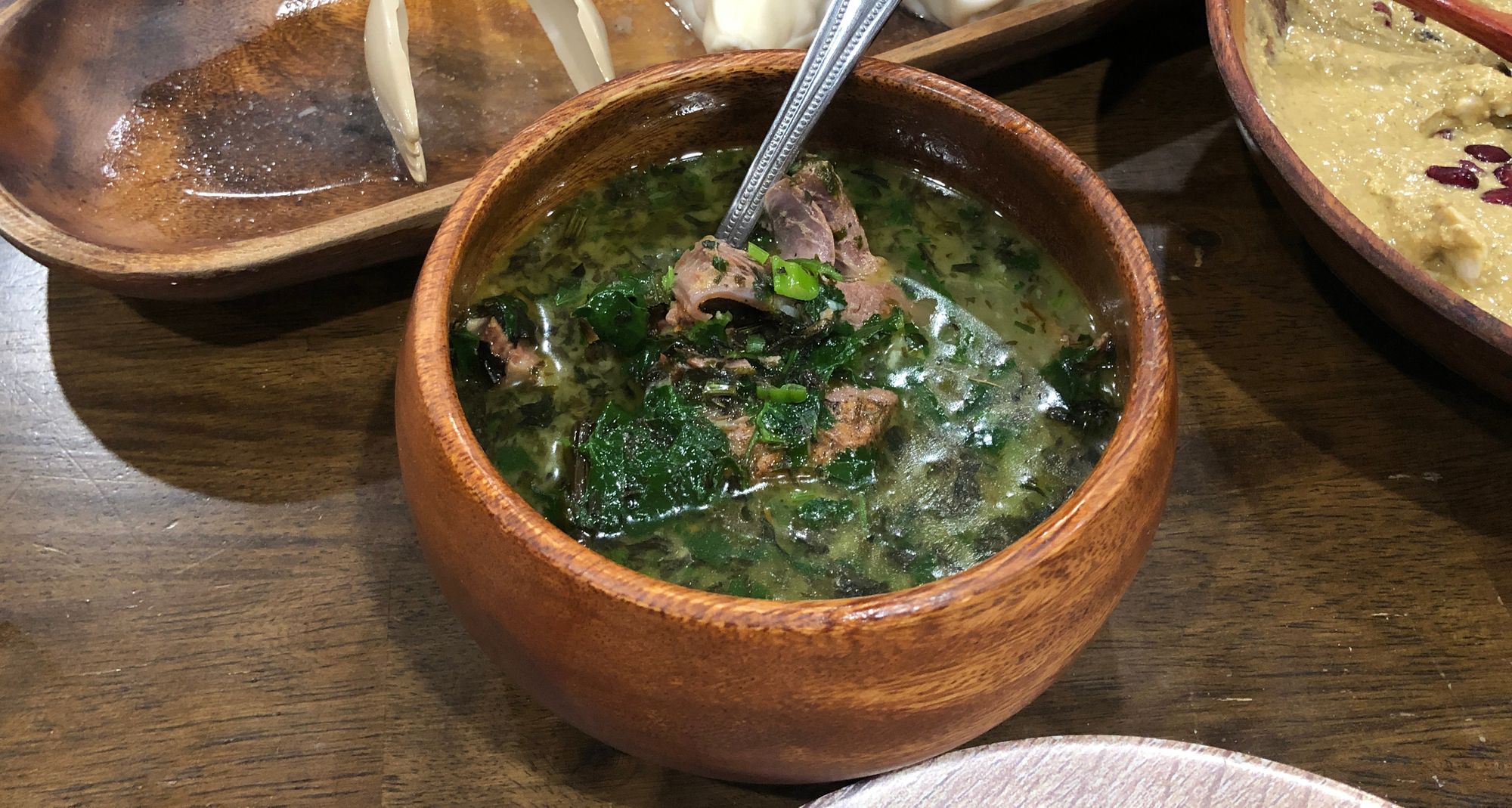Review: the best vegetables are in Glendale
White supremacy is working to ruin the cultures of different white ethnic groups in America.

My friend Jeremy Bowditch is one of my regular dining companions. He’s politically active and socially aware, and one night at Havlabar he explained a concept that I really hadn’t thought all the way to its conclusion: white supremacy has ruined the culture of different white ethnic groups in America. Because the supremacists have pushed the idea of whiteness as some sort of uniformity, it necessarily erases the customs and traditions of different groups. This is actually sometimes done overtly - when school lunches were nationalized in the US, they were designed to be as bland and generalized as possible, to try and convince children that “we” (people living in America) are all the same.
But not every group of honkies has given in to uniformity. For instance, I’m white, and Havlabar is a Georgian (as in Republic of Georgia) restaurant, and there’s a lot that goes on there that isn’t like anything I grew up with. For instance, I am almost always the only woman there other than the servers. The other tables are full of large groups of men smoking cigarettes. There are platters of fruit on every table. Once when I was there a priest came in and everyone, not just the people in his party, got up to greet him. (Not even my Irish people do that.) Then the priest downed a bottle of vodka. (Also not my culture. With an Irish priest it’d be whiskey, hah hah).
Also cultural, I think: One of the servers is so mean. I love her desperately. She’s never once let me finish a sentence (she knows what I should order, even when I’m still asking my stupid questions), but sometimes she smiles at me just a little bit.
Havlabar is one of the reasons I want to go to Republic of Georgia so badly. If the food is this good at this restaurant, it’s gotta be even better in-country, right? (Someone sponsor me to find out.)

Sacivi is chicken in walnut sauce. I don’t personally like it, but it’s very good, perfectly prepared. What I do love beyond measure is the chakapuli. Described on the menu as “lamb cooked in white wine with tarragon leaves, tkemali plums, mint, cilantro, green onion and garlic,” it arrives so unassumingly, just some bone-in hunks of meat in a very thin broth packed with various greenery. The bowl highlights one of the very best aspects of Caucasian (and I mean that in the real sense) cooking: the prolific use of herbs, in addition to vegetables. Yes, herbs fall under the vegetable umbrella, but Armenian, Azerbijiani, and Georgian cooking use them in abundance; there’s a flavorful stem and/or leaf of some sort in every bite. (This New Yorker essay from five years ago has really stuck with me.)
Havlabar has a variety of the huge bread, cheese, and sometimes egg pastries called khachapuri, but not, at least at the moment, Adjaruli, the most famous, and most boat-shaped, variety. That’s okay, it’s good to get your bread and cheese in different shapes. I recommend the Imeruli, named after the fresh cheese variety stuffed into the round pie.
Getting your vegetables in unexpected shapes is great, too. I enjoy the “assorted pkhali,” a beautiful platter of vegetarian terrines. The green is walnut and spinach, the magenta is walnut and beets, and the third, badrijani, is slices of eggplant wrapped around a walnut-garlic paste. Walnuts are nearly as important to Georgian cuisine as herbs.
Georgian food feels very joyful, especially in the way it uses foods that are often garnishes and accoutrements in other cultures as the main attraction in its recipes. And that’s an enormous cultural difference. Because according to my Irish grandma, my forebears were never all that joyful about potatoes.
